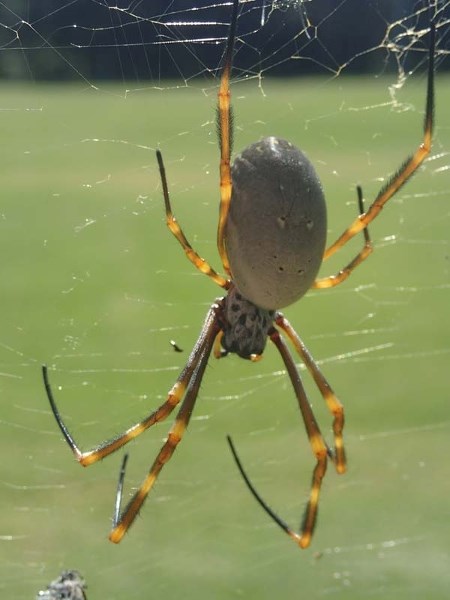Local residents can come out to Sturgeon County this weekend to help build the region’s newest nature reserve — and possible meet its two newest residents.
The Edmonton and Area Land Trust is holding its first-ever stewardship day at the Boisvert’s GreenWoods site this Saturday in Sturgeon County.
The 80-acre forest was donated to the trust earlier this year by St. Albert resident Halina Boisvert in memory of her late husband, Bernard, and is located north of Township Road 564 and west of Rural Route 250.
Land trust executive director Pamela Wight said she was looking for 10 local volunteers to help clear trails and put up signs at the site this weekend. While the group has a regular corps of Edmonton volunteers, it wanted to encourage county residents to take stewardship of this site.
“In effect, it is their property,” she said.
Volunteers will be pulling weeds and taking down the old “No Trespassing” signs at the site, Wight said. Tools and lunch will be provided.
Lucky visitors might also catch a glimpse of the site’s newest two residents: a pair of rehabilitated ravens from the Wildlife Rehabilitation Society of Edmonton.
The society is always looking for sites to release its animals and teamed up with the Edmonton Land Trust earlier this summer, says Kim Blomme, the society’s director of wildlife services.
“Their mandate is to conserve land, and our mandate is to conserve wildlife, so it’s a good fit.”
So far, the society has released muskrats, skunks, ducklings and two ravens onto various land trust sites, Blomme said. Boisvert’s GreenWoods was a good fit for the ravens due to its many trees, which will provide the birds with food and shelter.
Blomme said the odds of actually recognizing these two birds at the site are pretty low, as they aren’t marked.
Releases like this are an important way of maintaining biodiversity, Blomme said.
“It’s important to maintain the natural areas for the wellbeing of the animals as well as for the wellbeing of humans.”
Volunteers should call Rebecca Ellis at 780-850-3270 for directions to the site.
A new study out of Australia suggests that the city life could make spiders big and fat.
Biologist Elizabeth Lowe of the University of Sydney published a study this week in the online journal PLOS ONE on the effects of urbanization on spiders.
She and her team examined 222 golden orb-weaving spiders (Nephila plumipes) at 20 sites in and around Sydney. Sites included urban parks, remnant natural areas and continuous bushland.
Spiders in the genus Nephila family are huge and often spin webs two meters wide using super-strong golden yellow silk, says Edmonton arachnologist Robin Leech. Some of them catch birds and bats. The biggest orb-weavers we have in Alberta are about a third the size of these spiders.
The team found that spiders in urban areas with less natural vegetation and more hard surfaces such as buildings were noticeably bigger than those in rural ones.
Lowe said these spiders were likely benefiting from the urban heat island effect. The concrete and rock in cities retains heat, which may let spiders grow bigger. City lights might also draw more prey insects to these areas, giving the spiders more food.
Australia is also very dry and has lots of shade trees and watered gardens in its cities, noted Leech, who was asked to comment on this study. This would draw in more food for the spiders in a place that would have fewer natural spider predators.
Being big is also a liability in the golden orb-weaver’s natural forest habitat, as it makes them a bigger target for birds, he continues.
“This means that there is selection against, or if you will, a selective take-out of larger spiders in the wilds and forests,” Leech said.
The team also found that spiders in dense, richer neighbourhoods tended to be bigger and fatter than ones in less affluent ones.
Lowe said she wasn’t sure why this was the case, but noted that other studies had also found greater biodiversity in richer neighbourhoods. This could be due to more money being spent on vegetation management, creating better habitat for the spiders.
While urbanization generally decreases biodiversity, Lowe said some species like these spiders benefit from it.
“It is important to understand the way that cities are affecting these species in order to support diverse ecosystems in our cities.”
The study can be found at plos.org.




